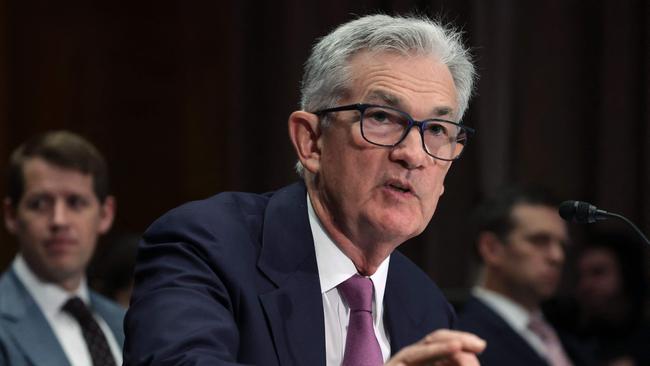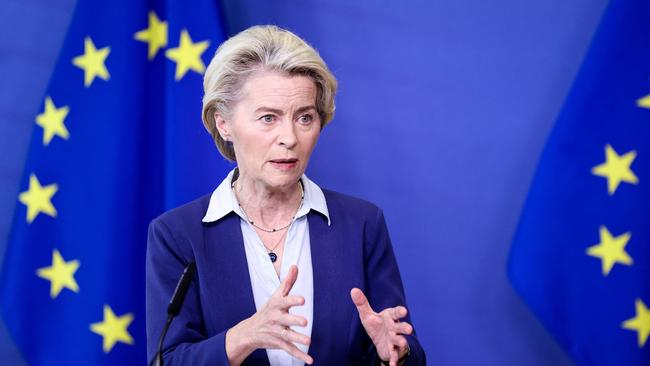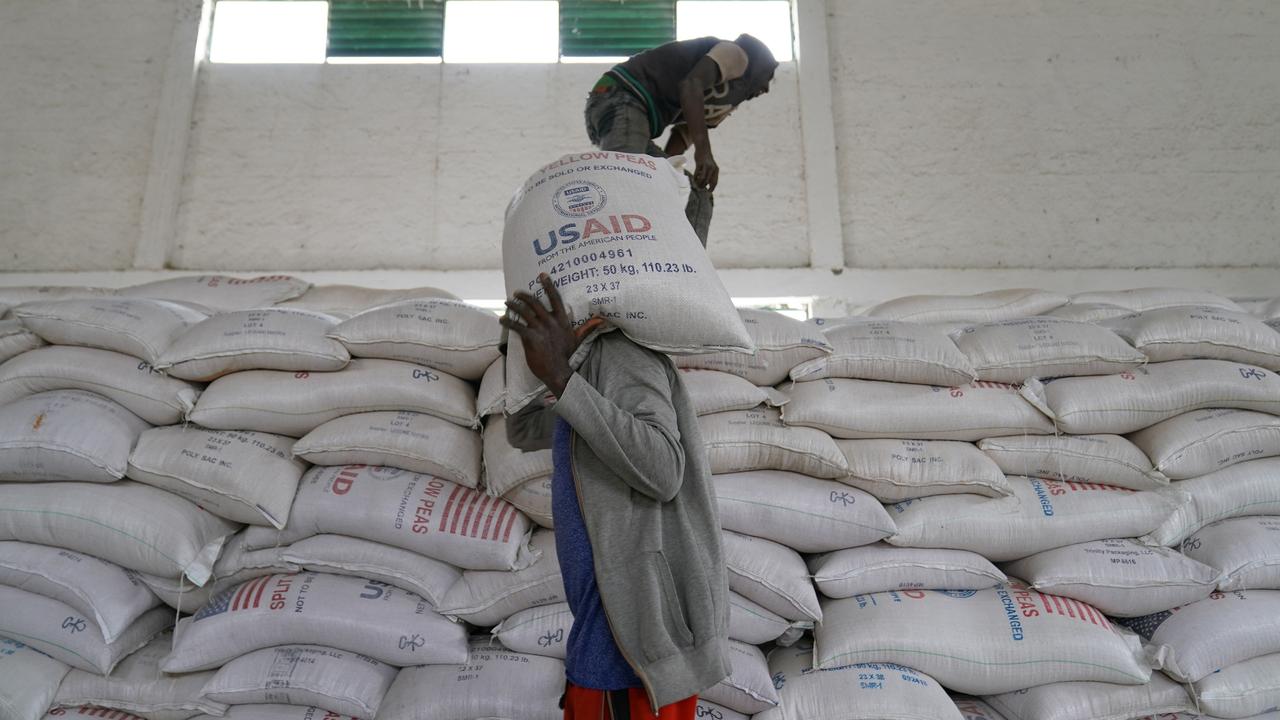Why economies haven’t slowed more since central banks hit the brakes
Pandemic effects and government aid are blunting impact of higher rates, for now.

The world’s central banks raced at an extraordinary pace over the past year to cool inflation, but it hasn’t proved enough – yet.
Economic growth remains mostly solid and price pressures strong across affluent countries despite sharply higher interest rates.
Why haven’t growth and inflation slowed more? Much of the explanation lies in the pandemic’s weird effects and the time it takes for central-bank rate increases to curb economic activity. Additionally, historically tight labour markets have fuelled wage gains and consumer spending.
First, the unusual nature of the pandemic-induced 2020 recession and the ensuing recovery blunted the normal impacts of rate hikes. In 2020 and 2021, the US and other governments provided trillions of dollars in financial assistance to households that were also saving money as the pandemic interrupted normal spending patterns. Meanwhile, central banks’ rock-bottom interest rates allowed companies and consumers to lock in low borrowing costs.
Households and businesses continued to spend heavily in recent months. Families tapped their savings, which were replenished by solid income growth. Businesses kept hiring thanks to pandemic-related labour shortages and large profits.
“There are just a lot of embedded pandemic-era forces that are working against this tightening,” Tom Barkin, president of the Federal Reserve Bank of Richmond, told reporters last week.

Two industries traditionally sensitive to interest rates – autos and construction – offer examples.
Pandemic-related shortages of semiconductor chips limited the supply of cars for sale, leading eager buyers to pay higher prices for the vehicles available. Although US construction of single-family homes tumbled last year, construction employment grew over the past 12 months. Fuelling job growth were supply-chain bottlenecks that extended the time needed to finish homes and a record amount of US apartment construction, which takes longer to complete.
US single-family housing construction has rebounded recently thanks to historically low numbers of homes for sale. Many households refinanced during the pandemic and locked in low mortgage rates – a good reason to stay put. “I didn’t fully anticipate how much the move in interest rates would convince people not to put their houses on the market,” Barkin said.
Normally, the Federal Reserve’s rate increases force heavily indebted consumers and businesses to rein in spending because they have to pay more to service their loans. But consumers haven’t overextended themselves with debt over the past two years; household debt service payments accounted for 9.6 per cent of disposable personal income during the first quarter, below the lowest levels recorded between 1980 and the onset of the pandemic in March 2020.
“A lot of the imbalances you might anticipate at this point in the cycle just have not had the time to build up,” said Matthew Luzzetti, chief US economist at Deutsche Bank.
Second, government spending has continued to bolster growth, cushioning economic shocks that proved less catastrophic than expected. While Europe’s energy crisis helped to tip the region into a shallow recession over the winter, the region skirted the deep downturn that some analysts had forecast. European governments pledged up to $US850bn to support spending.

This year falling oil and natural-gas prices have pumped up economic growth by putting money into consumers’ pockets, boosting confidence and easing pressures on government budgets. The price of a barrel of oil has fallen by nearly half in the past year, from around $US120 to less than $US70 – below its level before Russia’s 2022 invasion of Ukraine sent prices soaring.
The reopening of China’s economy supported activity in the country’s many trading partners, while weak domestic growth prompted Beijing this month to provide new stimulus.
In the US, fiscal policy has provided more oomph for the economy this year. Federal funding continues to flow from President Biden’s roughly $US1 trillion infrastructure package approved in 2021 and two pieces of legislation signed last year that provide hundreds of billions of dollars to boost renewable-energy production and semiconductor manufacturing.
A rock waiting to drop
Third, it takes time for higher interest rates to ripple through the economy and cool growth and inflation. The Bank of England first raised interest rates from near zero in December 2021, while the Fed and the European Central Bank lifted off in March 2022 and July 2022, respectively.

By some estimates, the first two-thirds of the Fed’s rate increased only restored rates to a level that was no longer pushing on the gas pedal, while the last third slowed the economy by pressing the brakes. The upshot is that policy has restricted growth for just eight or nine months, Atlanta Fed president Raphael Bostic wrote in an essay published last week.
Chicago Fed president Austan Goolsbee compared the potential coming impact of the Fed’s 5 percentage points in rate increases to the unseen hazards faced by Wile E. Coyote, the unlucky cartoon character. “If you raise 500 basis points in one year, is there a huge rock that’s just floating overhead … that’s going to drop on us?” he said in a recent interview.
Dario Perkins, managing director at the research firm TS Lombard, said higher rates are slowing growth in ways that aren’t obvious, such as by causing employers to cut unfilled jobs or companies to forgo expansion. “It might appear that monetary policy isn’t working when, in fact, it is, ” he wrote in a recent report.
Climbing the last mile
To be sure, some central banks might not have done enough to cool demand. The ECB, for example, increased its key rate to 3.5 per cent this month, but it is still negative when adjusted for inflation – potentially a stimulative level.
Many economists still anticipate a recession over the next six to 18 months, either because of past rate increases or those to come.
Just how much higher to raise rates is hard to judge because of mixed signals about economic activity. In the US, hiring has been strong, but average hours worked declined in May and the number of people filing for state unemployment benefits has climbed in recent weeks to its highest levels since late 2021.
Falling energy and grocery prices helped lower US inflation to 4 per cent in May from a four-decade high last summer of around 9 per cent, according to the Labor Department’s consumer-price index. The breadth of price increases has narrowed. In May, less than 50 per cent of all prices in the CPI rose by more than 5 per cent, down from 80 per cent of the index at one point last year.
Central bankers remain anxious, however, because measures of so-called core inflation, which exclude volatile food and energy prices, have declined much less. Those readings tend to better predict future inflation.
Central banks in Norway and the UK announced half-point interest-rate increases last week to address persistent inflation. Central banks in Canada and Australia recently resumed rate increases after pausing, pointing to higher service-sector inflation and tight labour markets.
The Switzerland-based Bank for International Settlements, a consortium of central banks, warned in a report released Sunday that reducing inflation to many central banks’ 2 per cent target could be harder than expected.
Easy gains from lower energy- and food-price inflation have been banked. The longer high inflation lasts, the more likely it is that people will adjust their behaviour and reinforce it, the BIS said. In that scenario, central banks might find they need to cause a sharper downturn to force inflation down to their goal.
“The ‘last mile’ may pose the biggest challenge,” the BIS said.
The Wall Street Journal





